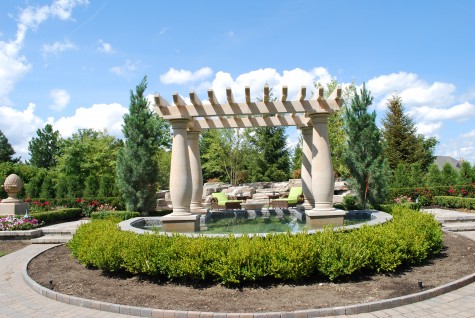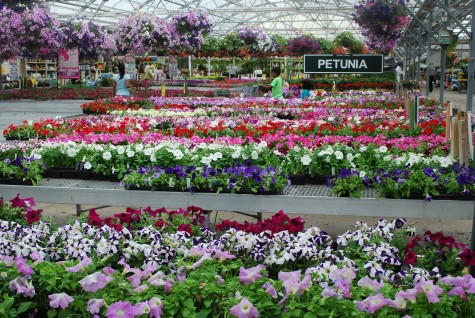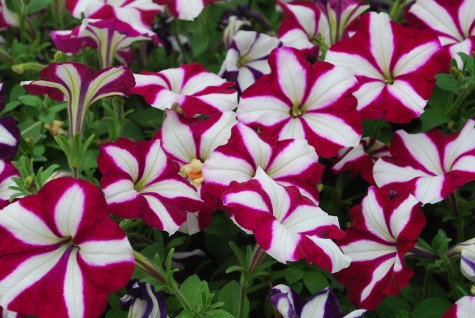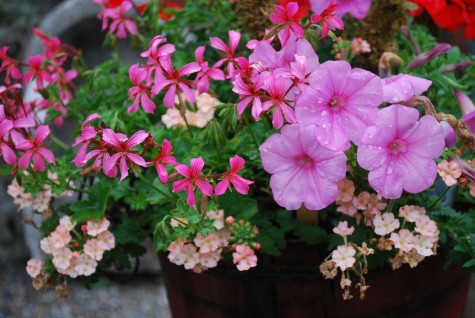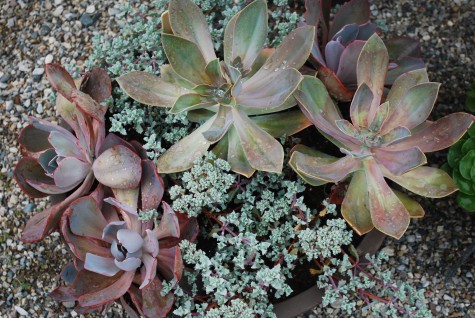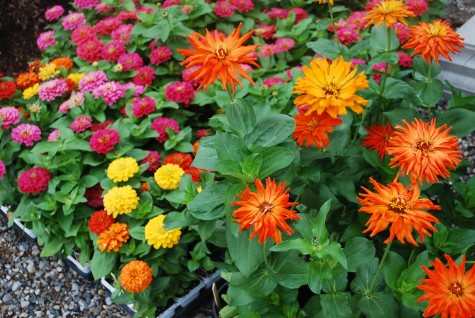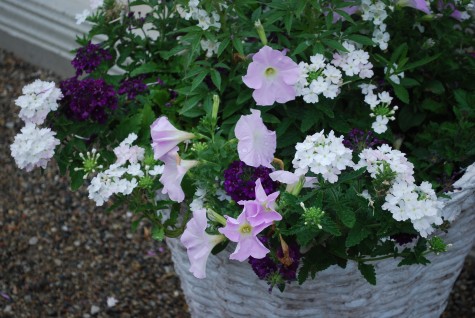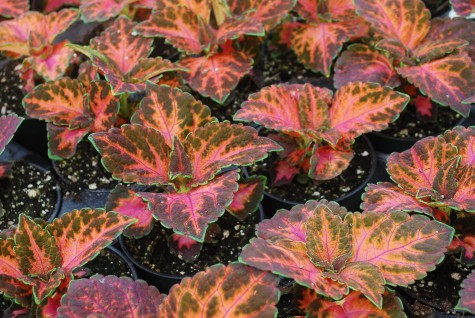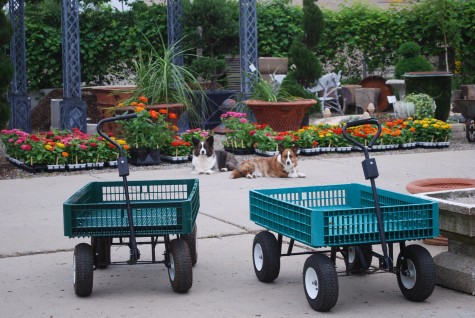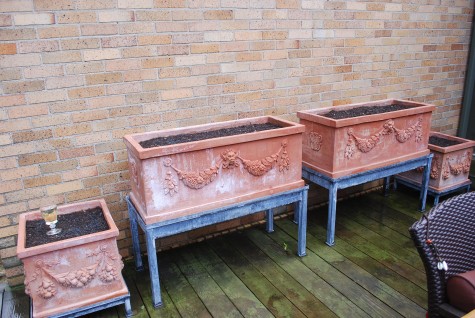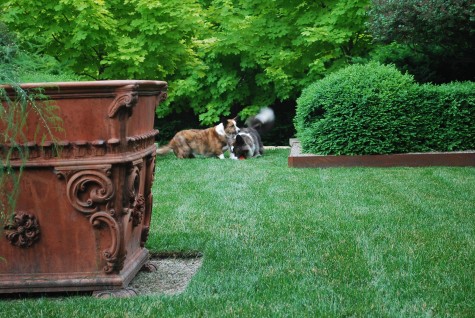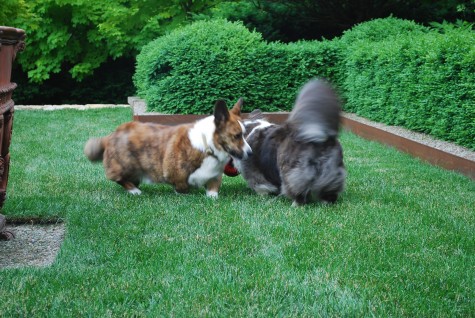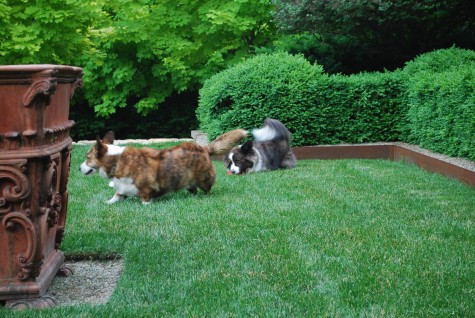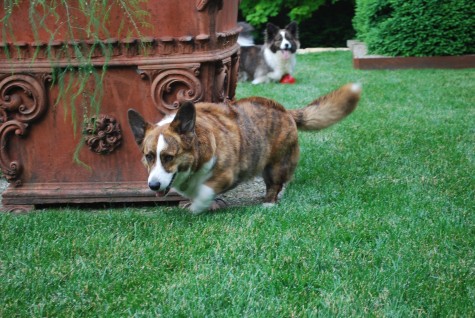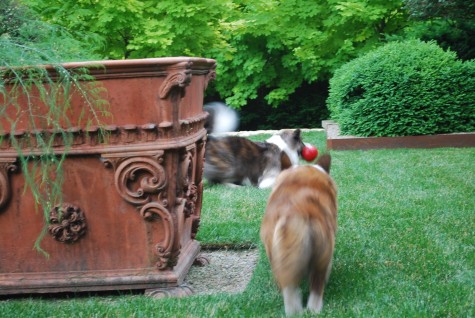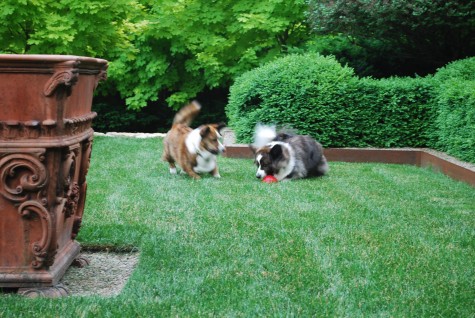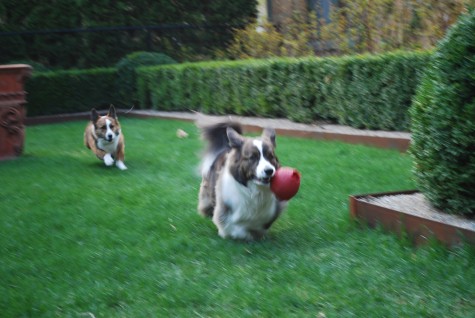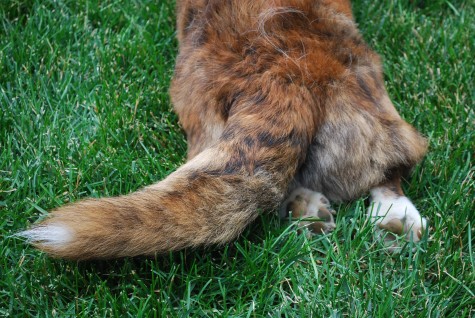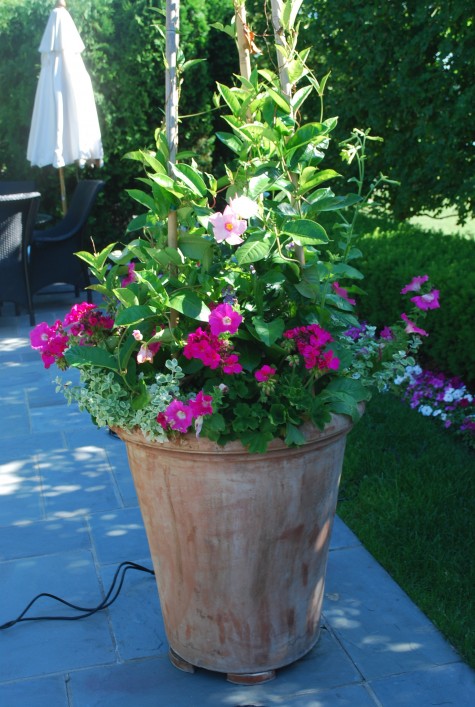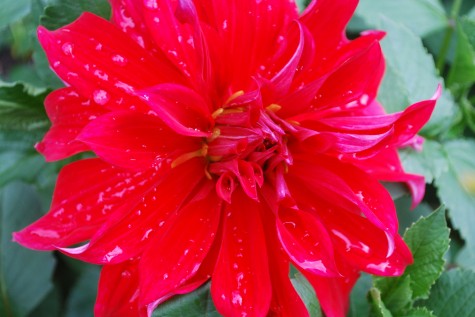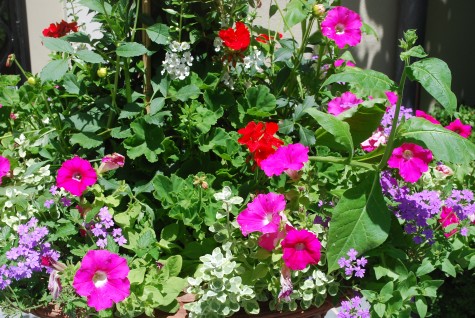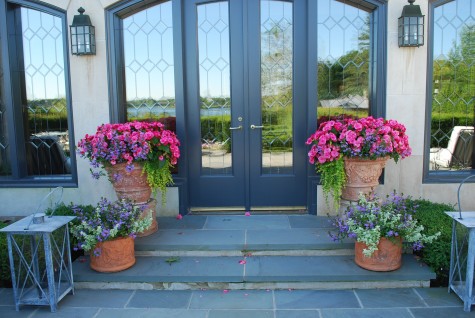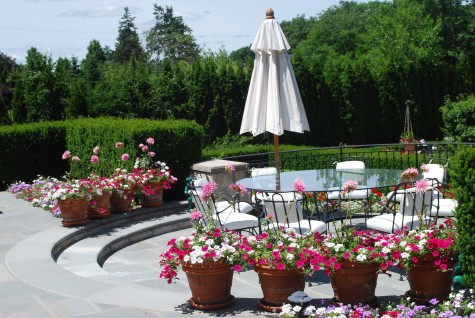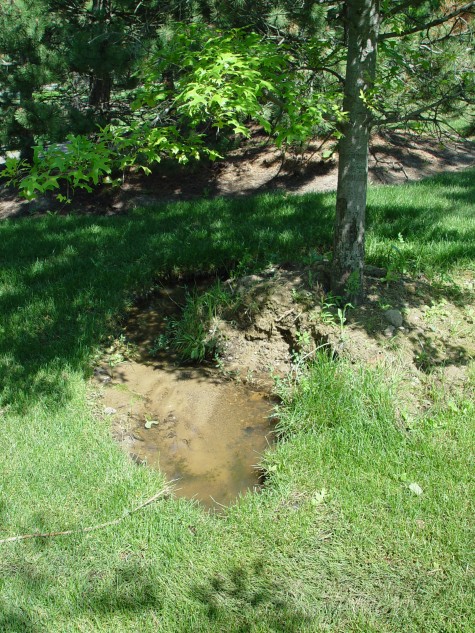 I get calls from people with trouble. More than landscape design, they need emergency services. When the basic requirements to sustain life go awry, and awry over time, an entire landscape can be threatened. The storage facility next door to Detroit Garden Works had me landscape their property when it was built-some 10 years ago. A company in Texas committed to enhancing and softening their buildings engaged me-a plan was installed. 3 years ago this facility was sold-to a person who has never activated the irrigation, never prunes, never feeds, and barely mows. I have been forced to watch this landscape decline-it is next door. I do not understand the thinking here-a landscape that was considerable to install does not take that much to maintain. Should the landscape need replacing-very expensive. What is the thought process here? The property next door-shabby. Making things grow is really not all that tough, if you are paying attention. Like every living creature, plants need food, water and shelter. The water laying below the sod, and on top of the soil in the picture above-dreadful. A lawn mower ripped the sod away-grass floating in water does not root. I knew I had a client in trouble.
I get calls from people with trouble. More than landscape design, they need emergency services. When the basic requirements to sustain life go awry, and awry over time, an entire landscape can be threatened. The storage facility next door to Detroit Garden Works had me landscape their property when it was built-some 10 years ago. A company in Texas committed to enhancing and softening their buildings engaged me-a plan was installed. 3 years ago this facility was sold-to a person who has never activated the irrigation, never prunes, never feeds, and barely mows. I have been forced to watch this landscape decline-it is next door. I do not understand the thinking here-a landscape that was considerable to install does not take that much to maintain. Should the landscape need replacing-very expensive. What is the thought process here? The property next door-shabby. Making things grow is really not all that tough, if you are paying attention. Like every living creature, plants need food, water and shelter. The water laying below the sod, and on top of the soil in the picture above-dreadful. A lawn mower ripped the sod away-grass floating in water does not root. I knew I had a client in trouble.
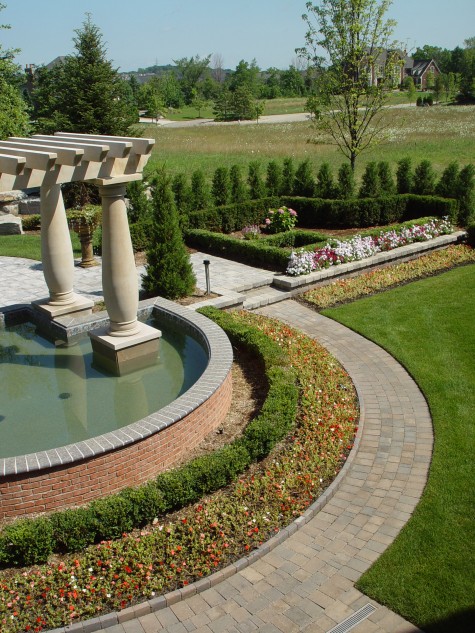 My client-her only clue that something was wrong was her poorly performing impatiens. Yellow leaved, stunted-and not growing. This picture was taken August1-terrible. No kidding, this property was not draining. Every plant was overboard without a life jacket. Drowning. I see this more than I would want to. The process of creating a subdivison-not so pretty. Some are built on land that does not perk-or drain. Giant basements come first-the stinking and metallic clay from that basement excavation gets spread on the surface of the property being built. The native topsoil has been scraped off, and sold.
My client-her only clue that something was wrong was her poorly performing impatiens. Yellow leaved, stunted-and not growing. This picture was taken August1-terrible. No kidding, this property was not draining. Every plant was overboard without a life jacket. Drowning. I see this more than I would want to. The process of creating a subdivison-not so pretty. Some are built on land that does not perk-or drain. Giant basements come first-the stinking and metallic clay from that basement excavation gets spread on the surface of the property being built. The native topsoil has been scraped off, and sold.
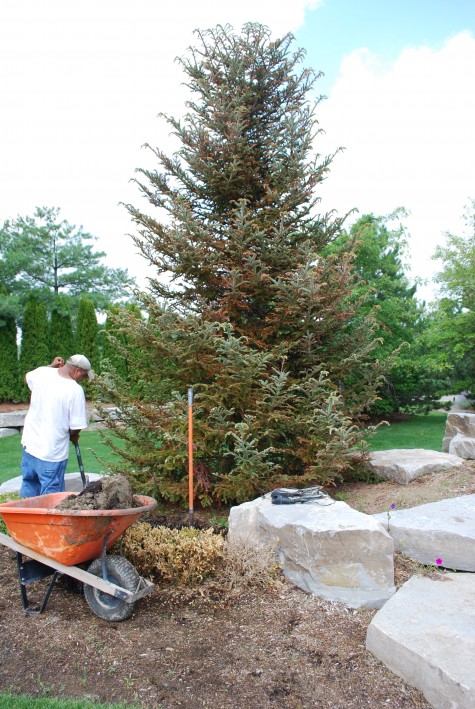 This old and regal fir has been drowning for quite some time-the end is near. The new growth at the tips drooping-a dead giveaway. Too much water rots the roots of trees, shrubs, perennials. No matter how much water is available, the plants cannot absorb it. Rotted roots-terrible. Ironic-a plant or tree wilted from root rot cannot be helped by more water. Plants need drainage away from their roots-unless they are lotus, bog plants, or banyon trees. When I water a tree, or a perennial, or a pot, I have every expectation that the water will drain away. Should it not-big trouble.
This old and regal fir has been drowning for quite some time-the end is near. The new growth at the tips drooping-a dead giveaway. Too much water rots the roots of trees, shrubs, perennials. No matter how much water is available, the plants cannot absorb it. Rotted roots-terrible. Ironic-a plant or tree wilted from root rot cannot be helped by more water. Plants need drainage away from their roots-unless they are lotus, bog plants, or banyon trees. When I water a tree, or a perennial, or a pot, I have every expectation that the water will drain away. Should it not-big trouble.
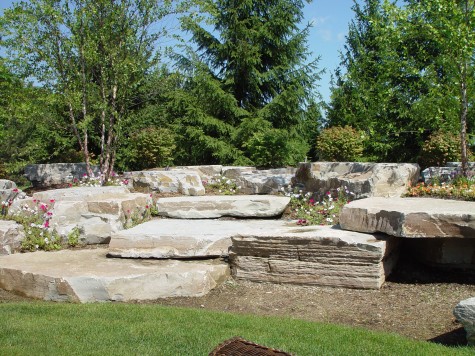 There are those landscape companies that make a business of rocking up and planting new suburban homes. They build great grindstone rock outcroppings without one clue as to how to plant them. This opera of a bed-left blank. The soil that does not drain-in their defense, I will say it is very difficult to explain to a client that wants flowers and color that they have to deal with the dirtiness underground. I have some skill in this regard-I brought that to bear with this client. Her landscape was in great distress, and in danger of dying altogether. Not that I love delivering that message-I still try to help, if I can.
There are those landscape companies that make a business of rocking up and planting new suburban homes. They build great grindstone rock outcroppings without one clue as to how to plant them. This opera of a bed-left blank. The soil that does not drain-in their defense, I will say it is very difficult to explain to a client that wants flowers and color that they have to deal with the dirtiness underground. I have some skill in this regard-I brought that to bear with this client. Her landscape was in great distress, and in danger of dying altogether. Not that I love delivering that message-I still try to help, if I can.
 No one likes to spend their hard earned money getting water to drain. You get this-do you not? I like to show my friends my pots, and my fountain-would I take them to the basement to show them my new furnace? No. If I spend money, I like that expenditure to be fun-and an event I can share. A new set of dishes, new garden chairs, a new pot-you get the idea. Persuading people to drain their property-a tough go.
No one likes to spend their hard earned money getting water to drain. You get this-do you not? I like to show my friends my pots, and my fountain-would I take them to the basement to show them my new furnace? No. If I spend money, I like that expenditure to be fun-and an event I can share. A new set of dishes, new garden chairs, a new pot-you get the idea. Persuading people to drain their property-a tough go.
 This client had other landscape issues. The design of this boxwood square implied some object of interest that was missing. A barked bed hosting two plants not related to each other-whoa. My client was at the mercy of a design build company that had little idea of how to design, and even less idea about how to build. They planted in soil that did not drain, topdressed with some dark bark so all would look good, and moved on.
This client had other landscape issues. The design of this boxwood square implied some object of interest that was missing. A barked bed hosting two plants not related to each other-whoa. My client was at the mercy of a design build company that had little idea of how to design, and even less idea about how to build. They planted in soil that did not drain, topdressed with some dark bark so all would look good, and moved on.
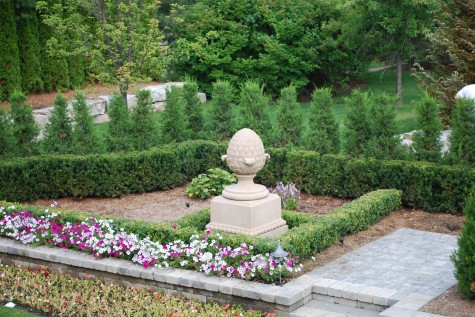 I did persuade her to add a pair of artichoke finials from Garden Traditions to her rear yard-the giant stone pergola and pool needed some company. The triangular growing junipers in the above picture-who would plant this plant as a hedge??- we replaced with arborvitae.
I did persuade her to add a pair of artichoke finials from Garden Traditions to her rear yard-the giant stone pergola and pool needed some company. The triangular growing junipers in the above picture-who would plant this plant as a hedge??- we replaced with arborvitae.
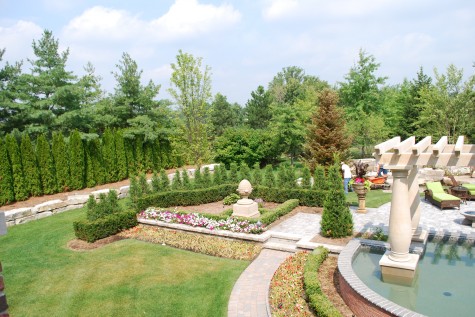 Solving her water issues was the organizing metaphor of our relationship. We installed drains, catch basins, regraded, planted- all at enormous expense. The company that installed this landscape rolled in, made a few moves, and drove away-leaving my client to pick up the pieces.
Solving her water issues was the organizing metaphor of our relationship. We installed drains, catch basins, regraded, planted- all at enormous expense. The company that installed this landscape rolled in, made a few moves, and drove away-leaving my client to pick up the pieces.
I did replace the drowning boxwood in front of her pool, after excavating and replacing that basement blue clay with soil that would sustain life. I did a giant amount of work for her-none of which blooms or can be shown to friends. The entire process wearied the both of us. I cannot remember how we parted ways-but there was a point at which I could no longer convince her to go on cleaning up the dirtiness that was going on underground. I happened to drive by the other day-looks to me like all of her plants have proper food, water and shelter. Her landscape is thriving. I feel good about this. Food, water, and shelter-simple.
